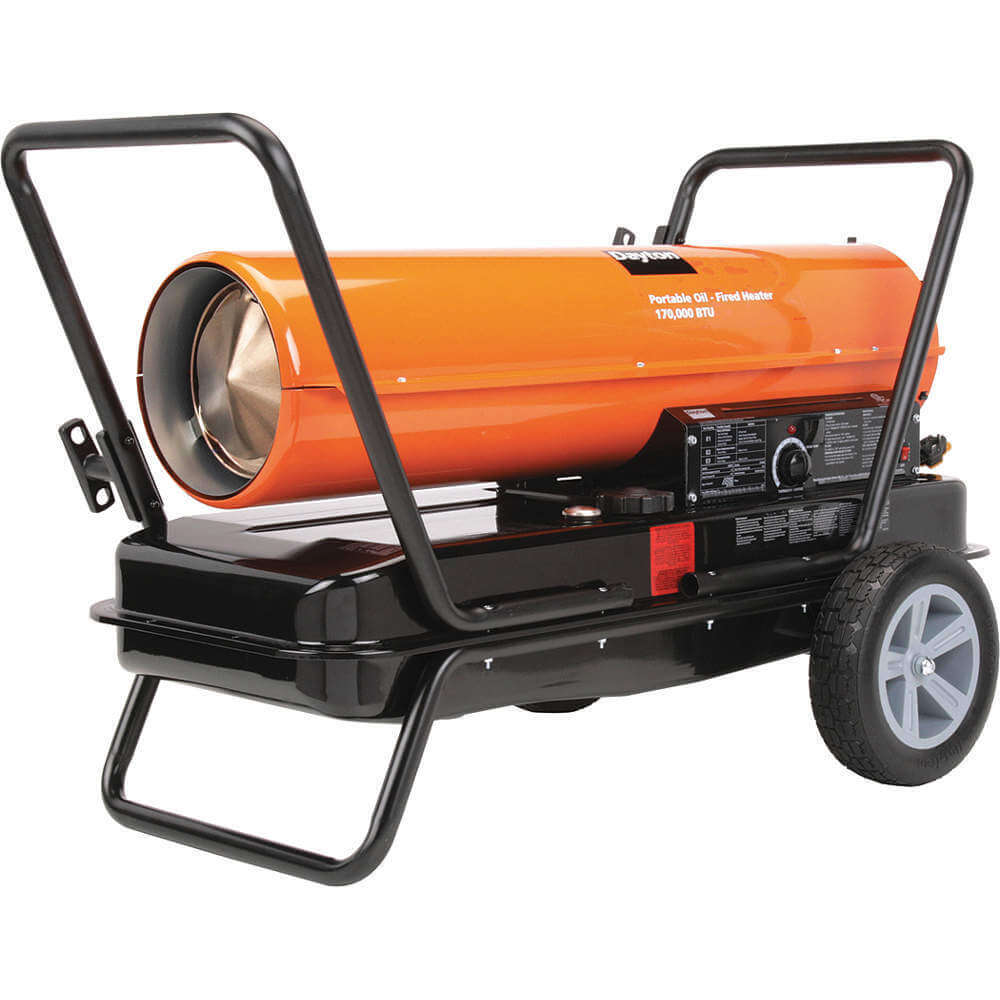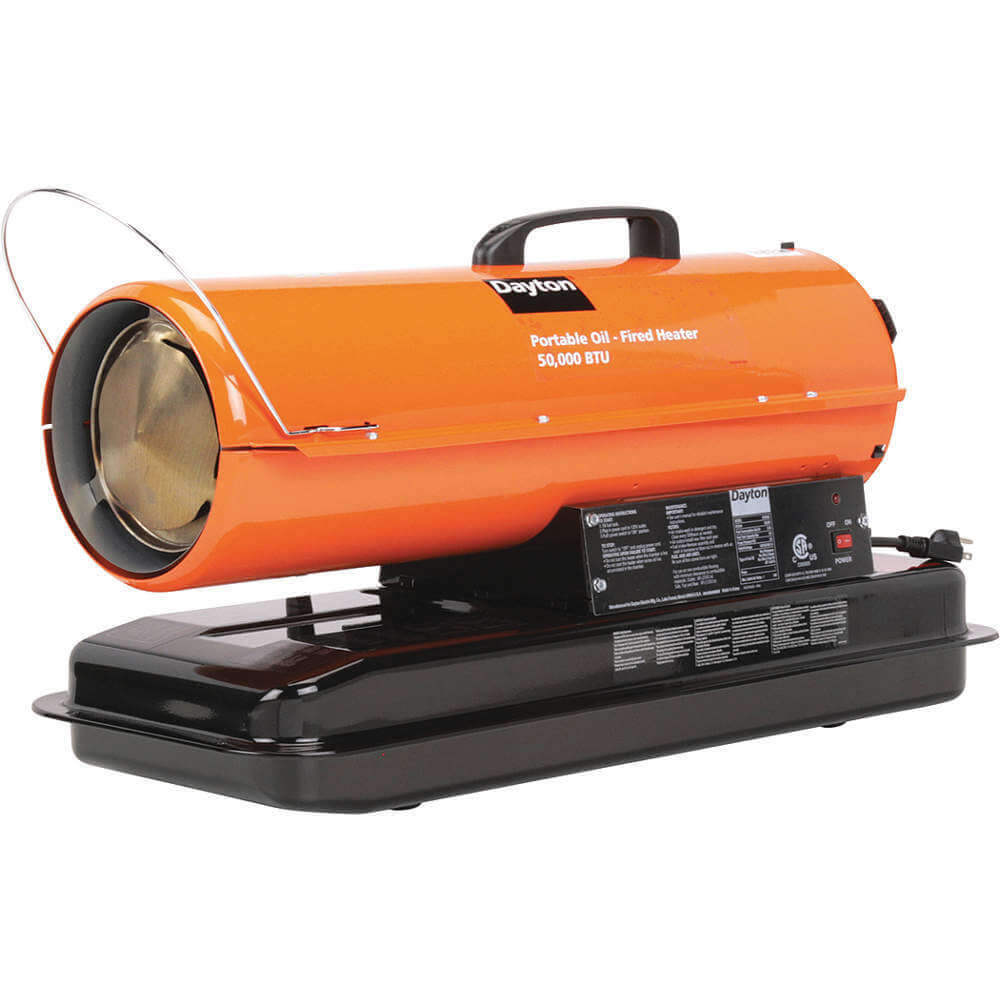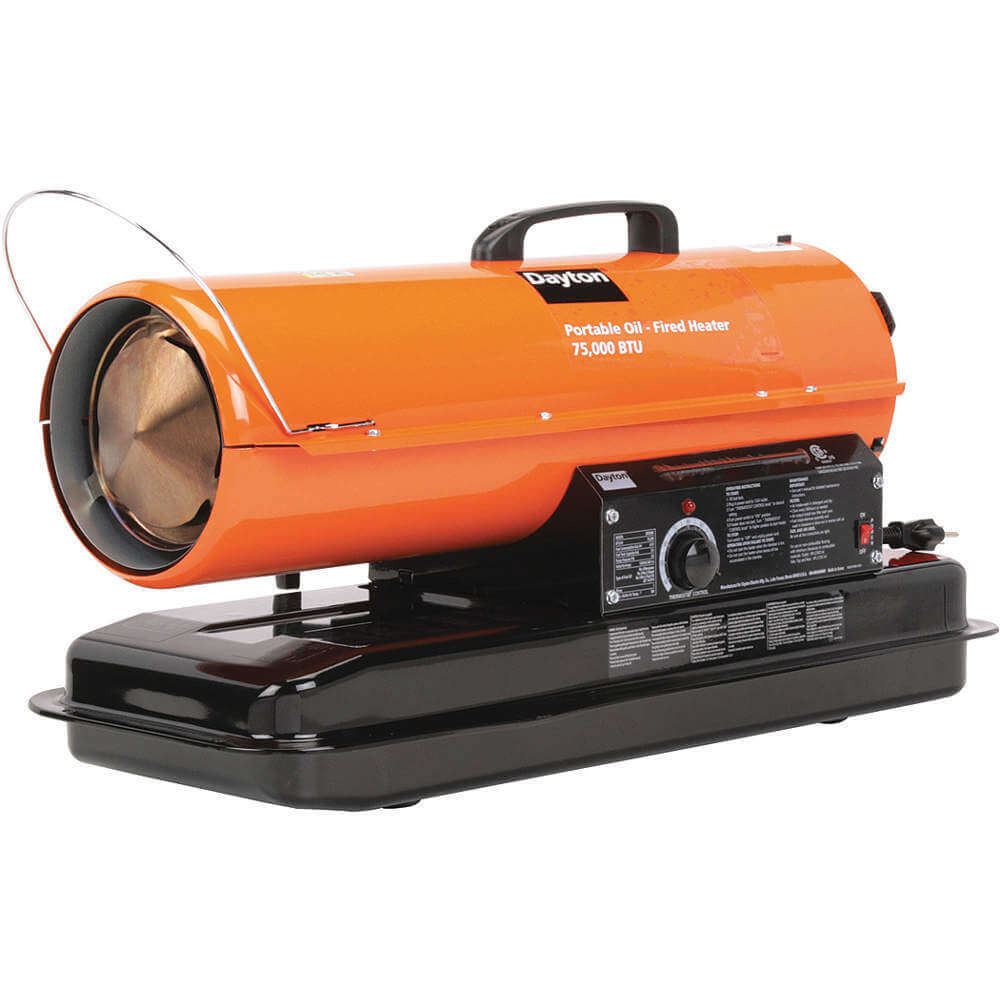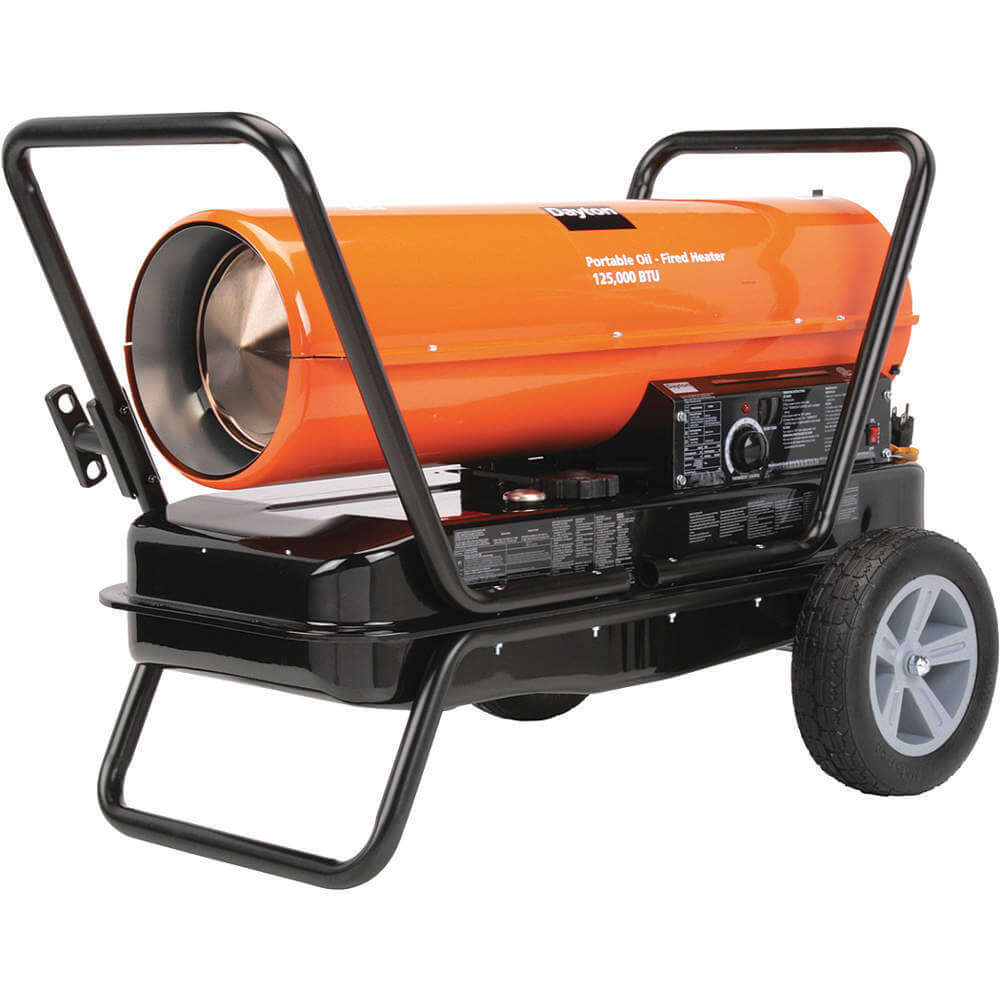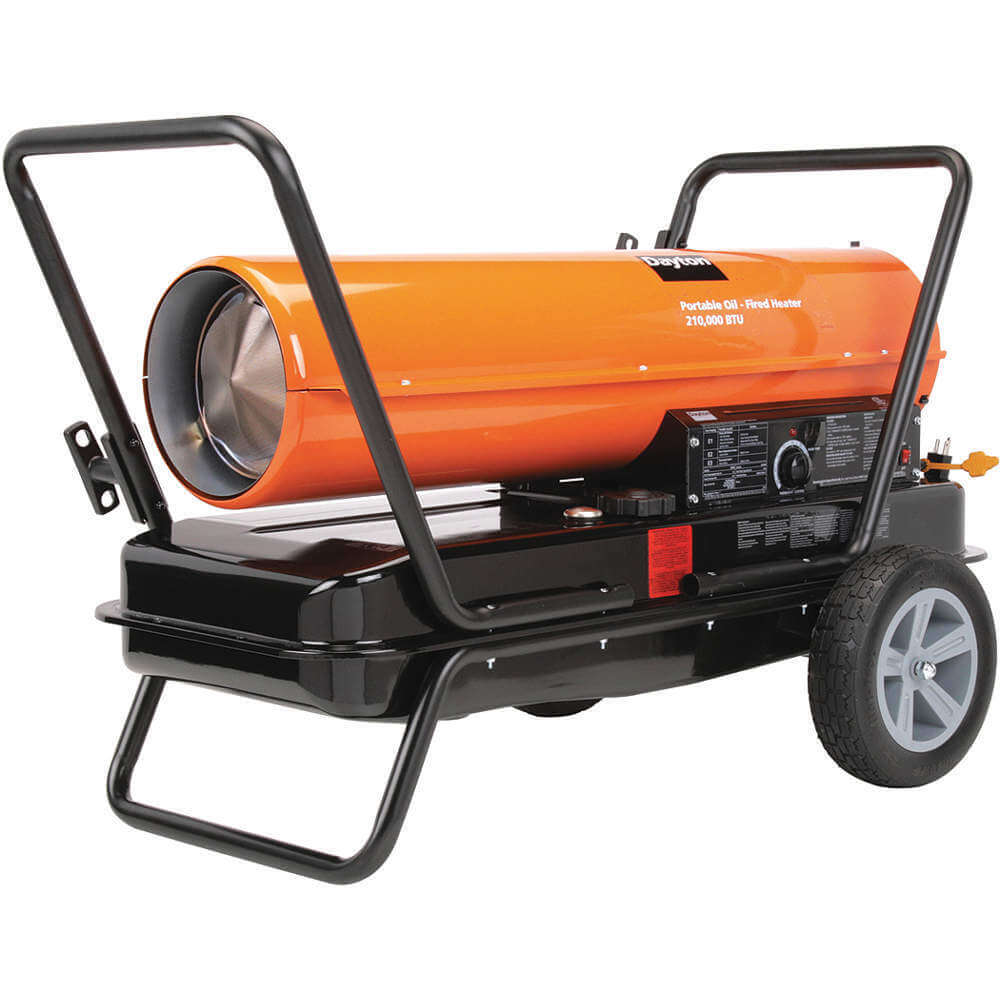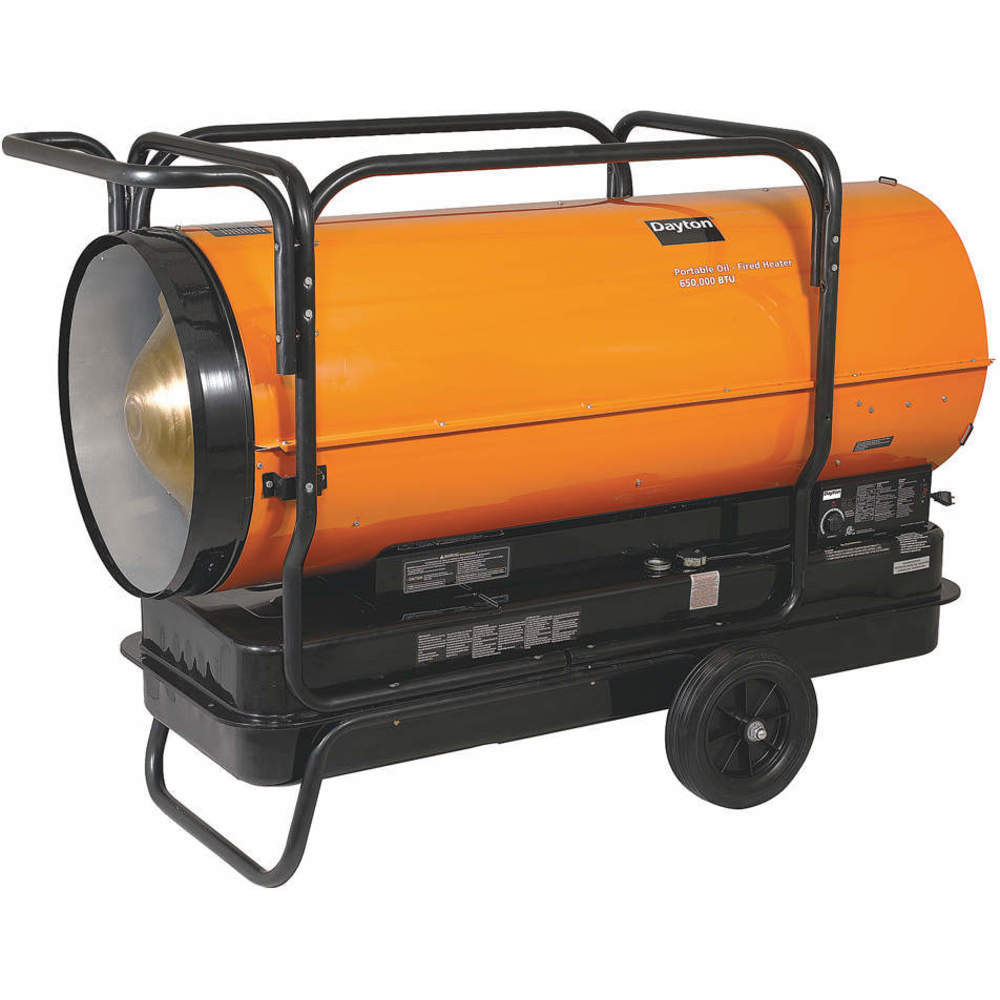Dayton 3VE51 oil-fired torpedo heater has a 170000 BTU output and a heating area of up to 4000 square feet. It has an open flame that directly heats the air to efficiently warm a space. This Dayton portable oil-fired heater helps workers in construction sites or supplement existing heating systems in warehouses, garages and workshops.
Working Mechanism:
- Dayton portable oil-fired torpedo heater works by igniting fuel in a combustion chamber.
- The ignited fuel produces heat, which is then circulated by a fan to warm the surrounding area.
Features:
- Dayton 3VE51 oil-fired torpedo heater has an electrically powered direct spark ignition system to start the heating process efficiently.
- It comes with a power failure indicator to alert users in the event of a power outage.
- This Dayton portable heater has a digital temperature readout that displays the current temperature setting or the actual temperature of the heated area.
- It includes a built-in air pressure gauge that monitors the air pressure within the heater.
- This Dayton torpedo heater features thermal overheat protection with a manual reset that automatically shuts off the heater if it detects excessive heat.
- It also comes with a flame-out sensor as a safety measure to prevent fuel leaks or other hazards.
Compatible Accessories:
Frequently Asked Questions:
Q. What are the safety considerations while using this Dayton 3VE51 oil-fired torpedo heater?
A.
- Never use gasoline, naphtha, paint thinners, alcohol or other highly flammable fuels.
- Store kerosene in a well-ventilated area outside the living area.
- Never store kerosene in a red container, in direct sunlight or near a heat source.
- Never use kerosene stored from one season to the next. Old kerosene will not burn properly in this heater.
Q. Can I use this torpedo heater outdoors?
A. Yes, this Dayton heater can be used outdoors, but it should be positioned away from combustible materials and used in well-ventilated areas to prevent the buildup of carbon monoxide.
Q. How do I maintain this portable heater?
A. Regular maintenance tasks include cleaning or replacing air filters, inspecting fuel lines for leaks, checking ignition systems and ensuring proper ventilation.
 Change Country
Change Country
